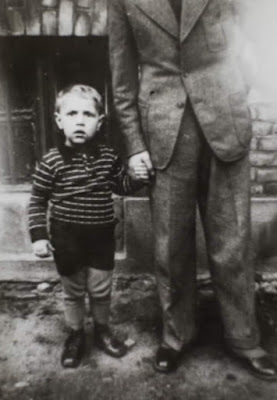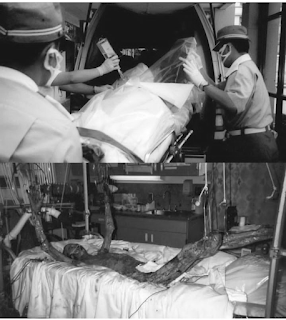This photo shows a young Reinhard Bundt, a German "wolf child"
This photo shows a young Reinhard Bundt, a German "wolf child", who fled to Lithuania at the end of World War II, when he was just 10 years old. His mother told him on her death bed in their bombed-out house in Königsberg, present-day Kaliningrad: “You have to survive, go to Lithuania.” He went there all alone with nearly frostbitten feet in a cargo train in cold December.¹
"My heart is German, but I’m Lithuanian." – Reinhard Bundt
In late 1944, towards the end of World War II, the Germans were losing and the Soviet Red Army was preparing to invade Germany. The people of the German territory of East Prussia were forbidden from fleeing their homes in the face of the terrifying nightmare that was on the horizon.
However, in early 1945, they were eventually permitted to leave and many fled, but some children were left behind, most of whom were orphans as a result of the war. Thousands of German orphans fled into the forests in fear and they had to fend for themselves—they had to scratch a living in the dark world that had overcome them.
They were forced to steal, beg, forage and some crossed the border into the neighbouring country of Lithuania where they were often fed and some were taken in by families or farmers. But in spite of this, their futures were uncertain and those who weren't taken in would starve or worse. These homeless children wandered the forests and would often walk down rail lines and jump onto trains to catch a lift in the hope of getting food from somewhere.
Lithuania at that time was occupied by the Soviets and following the war many people were reluctant to take in German children who, along with many other Germans, suffered because of their government's misdeeds. Those who did take German children in risked being caught and punished by the Soviet authorities and some families sent them on their way after a few months.
Children had to learn to speak Lithuanian to avoid detection; they also changed their names and some who survived only revealed their true identity more than forty years later, after the fall of the Soviet Union in 1991.
These children of East Prussia were later named "Wolfskinder" (Wolf Children) because they would wander through the cold forests in search of food. There are some still living in Lithuania today, likely those who were fortunate enough to be taken in by families. They are the last survivors of a great struggle that started when they were just children.
World War II was the most brutal and most costly war in history. People suffered on a huge scale, not only during, but also for decades after it ended. Many people were displaced, families were torn apart, and some were never reunited.
Author: International Man of History2 (Facebook page name)
. . .
📷Credit: Lukas Kreibig
Notes:
1. Quoted from Lukas Kreibig









.png)

Comments
Post a Comment